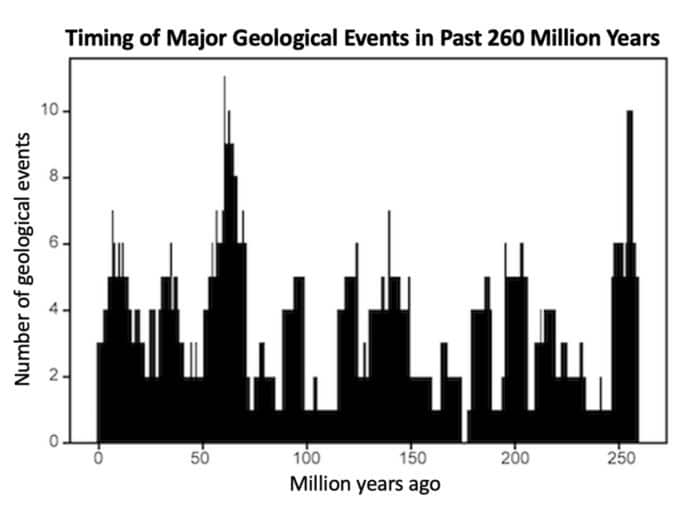Geological events are random over time. Until now, scientists have proposed cycles of major geological events—including volcanic activity and mass extinctions on land and sea.
But, early work on these correlations in the geological record was hampered by limits in the age-dating of geologic events, which kept scientists from conducting quantitative examinations.
Scientists have made significant improvements in radio-isotopic dating techniques and changes in the geologic time scale activity, leading to new data on the timing of past events.
In a recent study, scientists compiled updated records of major geological events over the last 260 million years and conducted new analyses.
Scientists compiled updated records of major geological activity events over the last 260 million years and conducted new analyses. They analyzed the ages of 89 well-dated major geological events of the previous 260 million years.
These events include marine and land extinctions, major volcanic outpourings of lava called flood-basalt eruptions, events when oceans were depleted of oxygen, sea-level fluctuations, and changes or reorganization in the Earth’s tectonic plates.
They found that these worldwide geologic events are usually clustered at ten diverse time points over the 260 million years, assembled in peaks or pulses of generally 27.5 million years apart. The recent cluster of geological events was around 7 million years prior. It means the next pulse of significant geological activity is in excess of 20 million years later.
These pulses may be a function of cycles of activity in the Earth’s interior—geophysical processes related to plate tectonics and climate dynamics. However, similar cycles in the Earth’s orbit in space might also be pacing these events.
Michael Rampino, a geologist and professor in New York University‘s Department of Biology, said, “Whatever the origins of these cyclical episodes, our findings support the case for a largely periodic, coordinated, and intermittently catastrophic geologic record, which is a departure from the views held by many geologists.”
Journal Reference:
- Michael R. Rampino et al., A pulse of the Earth: A 27.5-Myr underlying cycle in coordinated geological events over the last 260 Myr, Geoscience Frontiers (2021). DOI: 10.1016/j.gsf.2021.101245
